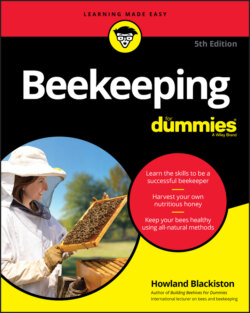Читать книгу Beekeeping For Dummies - Howland Blackiston - Страница 47
Pheromones
ОглавлениеPheromones are chemical scents that animals produce to trigger behavioral responses from the other members of the same species. Honey bee pheromones provide the “glue” that holds the colony together. The three types of adults in a hive, of which more is mentioned later in this chapter, produce different pheromones at different times to stimulate specific behaviors. The study of pheromones is a topic worthy of an entire book, so here are just a few basic facts about the ways pheromones help bees communicate:
Certain queen pheromones (known as queen substance, discussed at greater length later in this chapter) let the entire colony know that the queen is in residence and stimulate many worker-bee activities.
Outside of the hive, the queen pheromones act as a sex attractant to potential suitors (male drone bees from other colonies). They also help regulate the drone (male bee) population in the hive.
Queen pheromones stimulate many worker-bee activities, such as comb-building, brood-rearing, foraging, and food storage.
The worker bees at the hive’s entrance produce pheromones that help guide foraging bees back to their hive. The Nasonov gland (discussed later in this chapter) at the tip of the worker bee’s abdomen is responsible for this alluring scent.
Worker bees produce alarm pheromones that can trigger sudden and decisive aggression from the colony.
The colony’s brood (developing bee larvae and pupae) secretes special pheromones that help worker bees recognize the brood’s gender, stage of development, and feeding needs.
